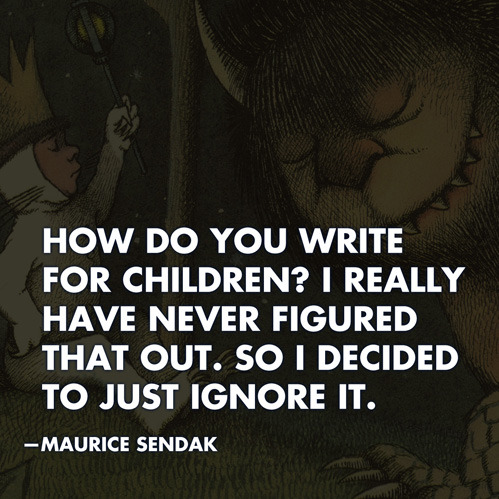
The world is in mourning this week for the passing of beloved children’s author Maurice Sendak. Like most people, I read Where the Wild Things Are and also, like most people, I spent much of my childhood buried in the world of videogames. What’s fascinating to me is that as a child of the ’80s, there was no such thing as children’s videogames. The titles I played were filled with wizards, warfare, weapons, death, killing, dying, and varying forms of moral complexity.
Since then, of course, videogames have suffered from varying degrees of criticism about their use of violence and perhaps this is just a functioning of the growing cinematic realism that today’s title hold that those of childhood did not. How many men did I cut in half in Ninja Gaiden for NES? I don’t know, but I was wielding a digital sword as a child nonetheless. (I have thankfully only murdered just a handful of men in real-life since then.)
But one of the tragedies of this dialogue has been this idea that kid’s need kid’s games. They need to be sanitized; they need to be protected; they need to shielded from the dangers of the world. The power in Sendak’s work was that it didn’t hide from sharp teeth or adolescent confusion. He embraced them. Andrew Romano’s eulogy for Sendak in The Daily Beast argues as much:
As I wrote in 2009, Sendak knew that the greatest children’s stories are about what happens when we become untethered from authority, whether by disobedience, disaster, or disregard, and the twinned feelings of freedom and fear we experience as we grapple with an autonomy we’re not quite ready for. They are, in that sense, rehearsals for adulthood.
Much like Max, Hansel and Gretel are abandoned by their parents in the forest and forced to fend for themselves. The children of The Cat in the Hat are left in the care of a massive anthropomorphic feline. Mary Lennox of The Secret Garden, James of James and the Giant Peach, and Harry Potter are all orphans; Astrid Lindgren’s unruly Pippi Longstocking might as well be. “That always seemed to be the most critical test that a child was confronted with—loss of parents, loss of direction, loss of love,” Sendak told me in 2009. “Can you live without a mother and a father?” Fiction and fantasy let children indulge their primal desire to grow up—to be rid of rules and face a dangerous and exhilarating world alone—from the safety of their own bedrooms.
The emphasis is mine. Games provide safe spaces for kids to work complicated ideas without any of the real world ramifications. Just as lion cubs play with each as preparation for hunting in later life, games allow us to create scenarios of real importance. But If games want to grow as a medium, that starts not with its oldest adherents but with its youngest. If we continue down a path of using games for kids as only a place for chopping fruit or throwing birds, we’ll learn nothing from the legacy from someone who understood children better than anyone.
[img]